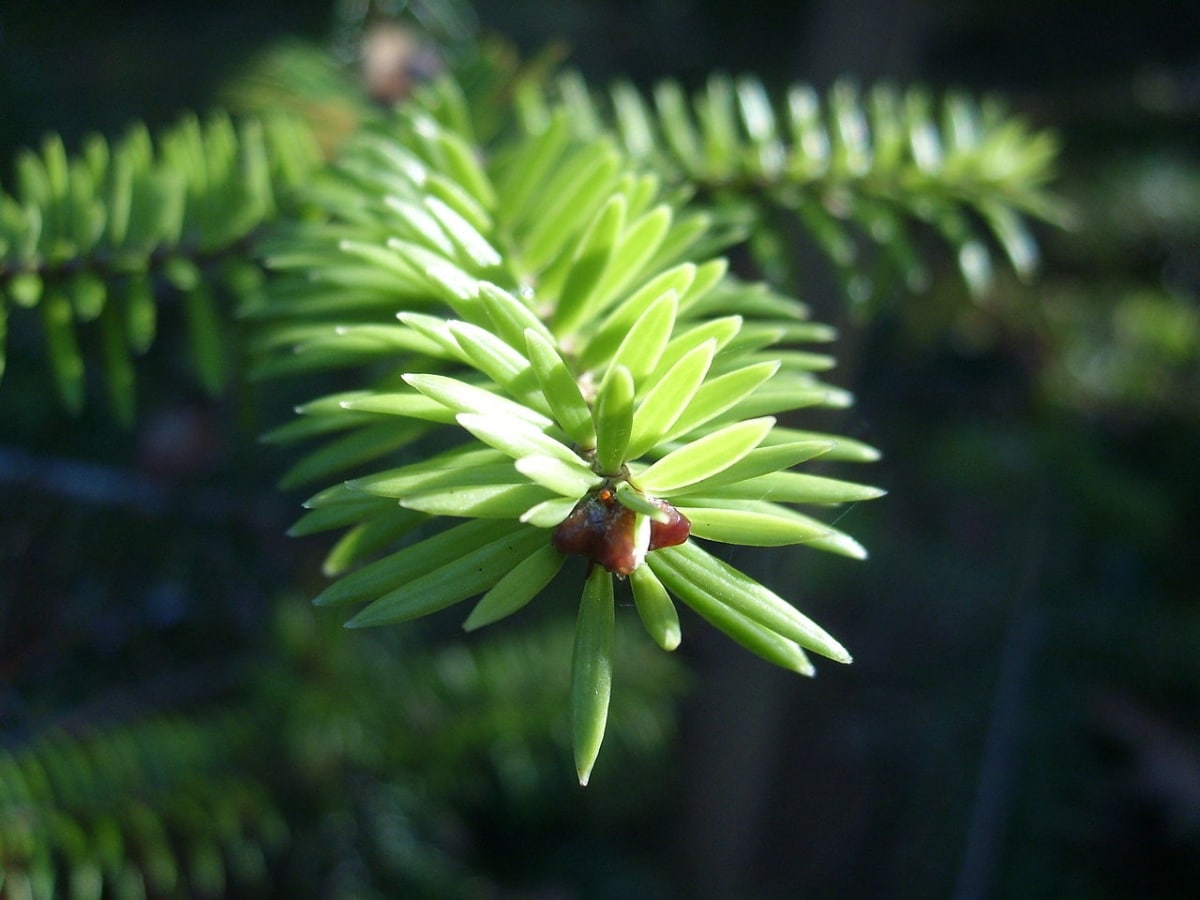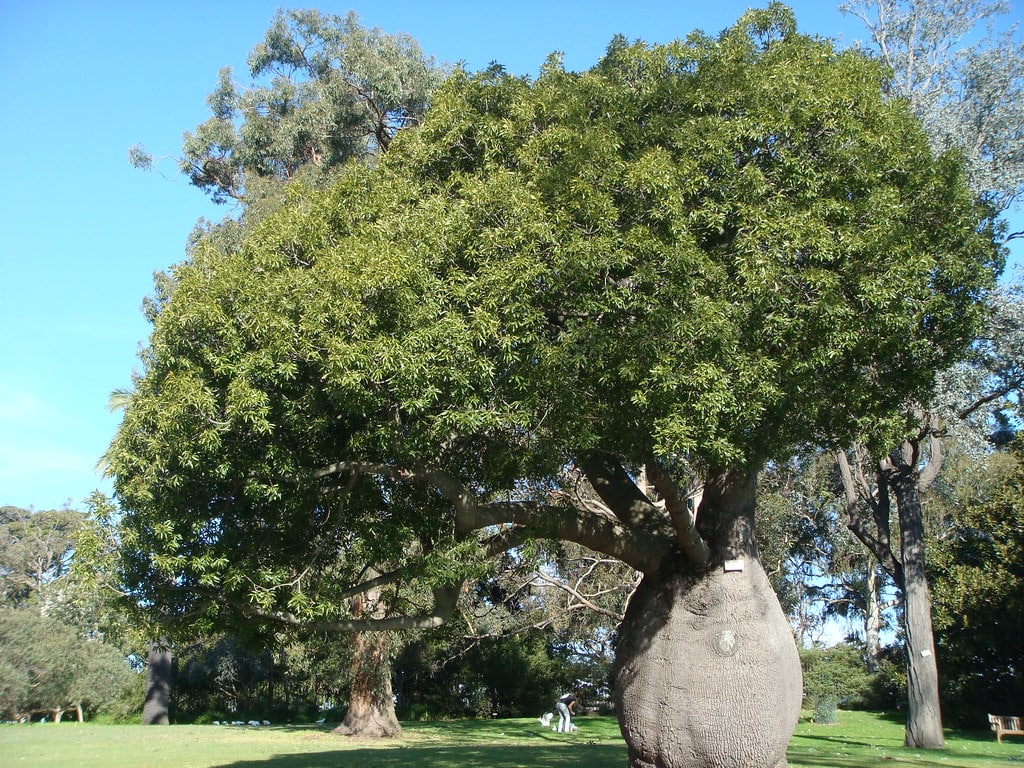
Image – Wikimedia/Tilo Podner
Fir is a common name that we use to refer to a series of large conifers that have a pyramidal shape. They are very elegant, and despite the fact that they grow slowly, they are often used as decorative elements in gardens, almost always as isolated specimens.
It is known that there are about fifty varieties of fir trees, but there are still doubts as to whether they are all primary species or whether some are subspecies. In any case, don't worry about this now. Next I am going to tell you about those that you can find more easily for sale in Spain, and how you have to take care of them.
What is fir?
Fir is the common name given to plants of the genus Abies. They are native to the northern hemisphere, where they live mainly in coniferous forests found at high altitudes. Their height ranges between 10 and 80 meters, and it is relatively easy to identify them because they have a pyramid shape.. The leaves are acicular, green or bluish green.
The fruits are cylindrical cones that are between 5 and 30 centimeters long. These are compact and very hard. When decomposing, the seeds are left free.
What is?
It is a plant with several uses, which are:
- garden tree: as we mentioned at the beginning, they are plants that are grown as a solitary specimen, or in rows. They look very nice in medium and large gardens, for example in the rest area.
- christmas plant: they are widely used as a Christmas tree, especially Abies nordmanniana. But they do not adapt to the conditions inside the home, so they lose their leaves quickly.
- Wood: It is used to make frames, doors, and the like that are going to be inside a house.
types of spruce
If you would like to have a fir in your garden but you do not know which one to choose, now you are going to know the varieties that are most used:
Abies alba

Image - Wikimedia / böhringer friedrich
It is known as common fir or white fir, and it is a tree that reaches a height of between 20 and 60 meters. It is native to central Europe, reaching the north of Spain and in particular the Pyrenees. It likes fertile soils, and somewhat acidic.
abies balsamea

Image - Wikimedia / Cephas
Known as Christmas fir or balsam fir, it is a conifer native to the United States and Canada that grows between 14 and 27 meters in height. Its leaves are shiny dark green, and its cones are purple at first and later brown.
Abies concolor

Image - Wikimedia / S. Rae
The Colorado spruce is a conifer that grows in the mountains of western North America. Reaches a height of between 25 and 60 meters, and its leaves are green or bluish-green. Its trunk is, like that of the other species, columnar; and the brown cones.
Abies koreana

Image – Wikimedia/Lestath
The Korean fir is a tree native to South Korea, where it lives in the highest mountains. Reaches a height of 10-18 meters, and its leaves are green. The cones are purple, and take about 6 months to mature. It is only advised to grow in cold climates.
Abies nordmanniana

Image - Wikimedia / James Gaither
It is known as Normandy fir or Caucasian fir, and is native to both the Caucasus and Asia Minor. Reaches a height of 60 meters, and has green leaves. Its cones are pinkish.
abies pinsapo

Image – Wikimedia/Tree-species on Flickr
The Spanish fir is a conifer native to the south of the Iberian Peninsula that grows up to 30 meters high. Its trunk is straight, but as it ages it can twist. The leaves are dark green, and produce reddish or purple cones. It is a species that is in danger of extinction.
How do you take care of a fir tree?
The fir is a tree that resists cold and frost very well, but it is important that it is placed in the right place, otherwise it will begin to lose leaves quickly. So, to prevent this from happening, let's see how to take care of it:
Location

Image - Wikimedia / MPF
You have to have it outside, always. It is not a good idea to have it at home, even for a couple of weeks a year. It is a tree for the garden, which needs to feel the passing of the seasons, the rain, the wind, the snow, the sun.
In addition, due to its large size and roots, it is important that it is planted in the ground, at a distance of about ten meters from the pipes.
Soil or substrate
- Garden: the land must be rich in organic matter. In addition, it must be deep, light and have good drainage.
- Flower pot: taking into account that its growth rate is very slow, it is possible to grow it in a pot for many years. Uses universal substrate (for sale here) or a 30% perlite mulch mix (for sale here).
Irrigation
These plants live in areas where it rains frequently. Therefore, it is necessary that if we live in an area where it rains little, we water it about three times a week in summer, and once or twice a week in autumn and winter.
But if we have it planted in the ground and it rains throughout the year, we just have to be a little aware of it the first few years.

Subscriber
The subscriber is highly recommended for the fir tree to grow healthily. It is done in spring and summer, using, for example, organic fertilizers such as guano (for sale here) or cow manure. Spread a little around the trunk of the plant, and then water.
Transplant
En spring. In the event that it is in a pot, you have to plant it in a larger one every 4 years approximately. Even so, as soon as it measures 1 meter, the ideal will be to move it to the ground so that it can grow strongly.
Multiplication
Fir multiplies by seeds, which must be sown in winter, in a pot placed outside, or stratified in the fridge for three months. It is advisable to use land for seedbeds (for sale here) or vermiculite (for sale here), and keep it moist but not waterlogged. They can take several months to germinate.
Rusticity
Resists intense frosts up to -18ºC on average.

Image - Wikimedia / Crusier
Do you like fir?